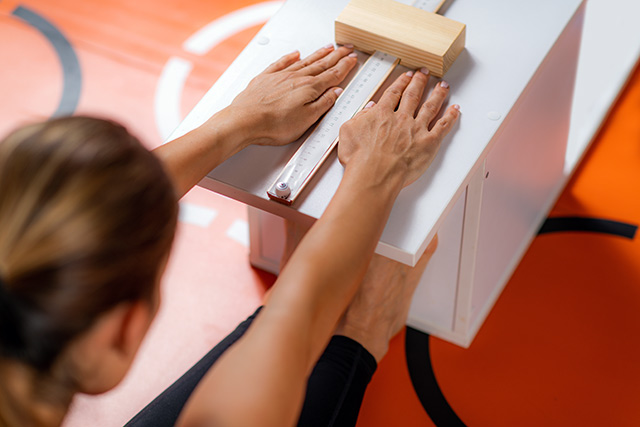Here is one of the archived newsletters from Topend Sports. Sign up to receive the latest sports and science news direct to your email inbox. See more archived newsletters.
Hi and welcome to the June 2009 fitness testing newsletter, which contains a discussion of the variations in the sit and reach flexibility test procedures.
You are receiving this email as you have subscribed through the Topend Sports website.
Sit and Reach Test
The sit and reach fitness test is a common measure of flexibility, and specifically measures the flexibility of the lower back and hamstring muscles. This test is important as because tightness in this area is implicated in lumbar lordosis, forward pelvic tilt and lower back pain.
Variations
There are surprisingly quite a few variations of the sit and reach test.
Many of the variations of this test involve the differences in the value of the level of the feet. The most logical method (to me anyway) is to use the level of the feet as recording zero, so that any stretch that does not reach the toes is negative and any reach past the toes is positive (such as for PRT Sit and Reach for the Navy).
However, using negative values is more difficult for statistical analyses and for comparing results between and within individuals. The procedure for the Presidents Challenge version require that the box is made with 9 inches (23 cm) at the level of the feet, so reaching two inches past the toes is recorded as 11 inches. The Eurofit manual suggests having 15cm at the level of the feet.
 sit and reach flexibility testing
sit and reach flexibility testingA limitation of the traditional sit and reach procedure is that people with long arms and/or short legs would get a better result, while those with short arms and/or long legs are at a disadvantage. The modified sit and reach test controls for this, as the zero mark is adjusted for each individual, based on their sitting reach level. The traditional sit and reach procedure also measures the combined flexibility of the legs. The Back-Saver Sit and Reach, as as used by Fitnessgram Program, tests one leg at a time.
If you do not have a specifically made sit and reach box, you can use any box, crate or step with a long ruler. You can follow the description of the Sit and Reach at home, a simple version that can be done with minimal equipment, or the V-Sit Flexibility Test, similar to the sit and reach though it uses a line on the ground instead of a box.
Need More Info?
To see more information about the sit and reach test, and links to all those variations mentioned above, see thesit and reach article online:
About this Newsletter
Keep subscribing to this fitness testing newsletter for the latest information concerning fitness testing, including notification of updates to the ultimate source of all fitness testing information - 'Rob's Home of Fitness Testing'.
Thank you for your ongoing support of my site.
Rob Wood
Rob's Home of Fitness Testing
Related Pages
- sign up for the latest newsletters
- See more archived newsletters


 Current Events
Current Events